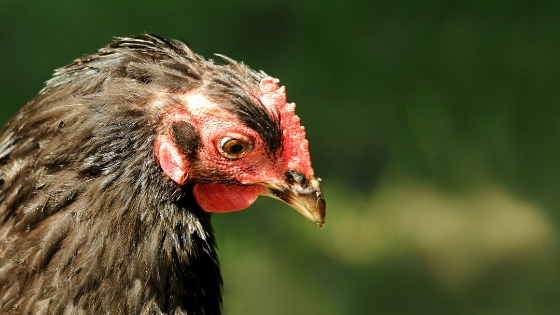Have you noticed that your chickens start to lose some of their feathers late in the summer every year? A couple times a year, chickens go through a process called molting where they lose feathers and their egg production drops off. Molting usually happens in adult birds twice a year (in the fall and spring) as the amount of daylight changes.
Chickens go through several molts as they grow. Their first molt happens when they lose their baby down and grow in feathers when they’re only about a week old. Then they molt again around eight to twelve weeks, and at this time their sex becomes apparent. Chickens start their adult molts when they’re around 18 months old and they can last anywhere from four to twelve weeks.
Molting is perfectly normal and all adult birds molt, not just chickens. Some people are surprised to find out that even peacocks molt, as do all wild birds. So don’t be alarmed if you start seeing chickens missing feathers or notice a lot of feathers in the coop. Your chickens are aren’t sick or dying, they’re just working on shiny new plumage.

The frustrating part of molting is that during this time, chickens don’t lay as many eggs or they may cease laying eggs altogether as their energy shifts to losing and re-growing feathers. Adding artificial light in the mornings is a way to keep your chickens’ egg production up. Some people don’t want to interfere with a chicken’s normal biological processes, but some people do. Adding light is generally accepted as safe for your chickens and doing so is up to you. Some backyard chicken owners compromise by adding a light a few weeks after egg production drops off to give their chickens a bit of rest, but still continue to get eggs throughout part of the winter.
Sometimes molting can be a painful process for chickens so your once friendly chickens may seem grumpy and might not like to be handled. During molting time, it’s important to reduce the amount of stress your birds may be exposed to. You might not want to move them to a new coop or introduce new flock mates during this time. You can also increase the amount of protein in their feed to 20-25% broiler feed to support them during this time because sometimes chickens lose weight during their molt.
Supporting your chickens during their molt is an important part of backyard chicken keeping. Do you do anything differently when your chickens start to molt?